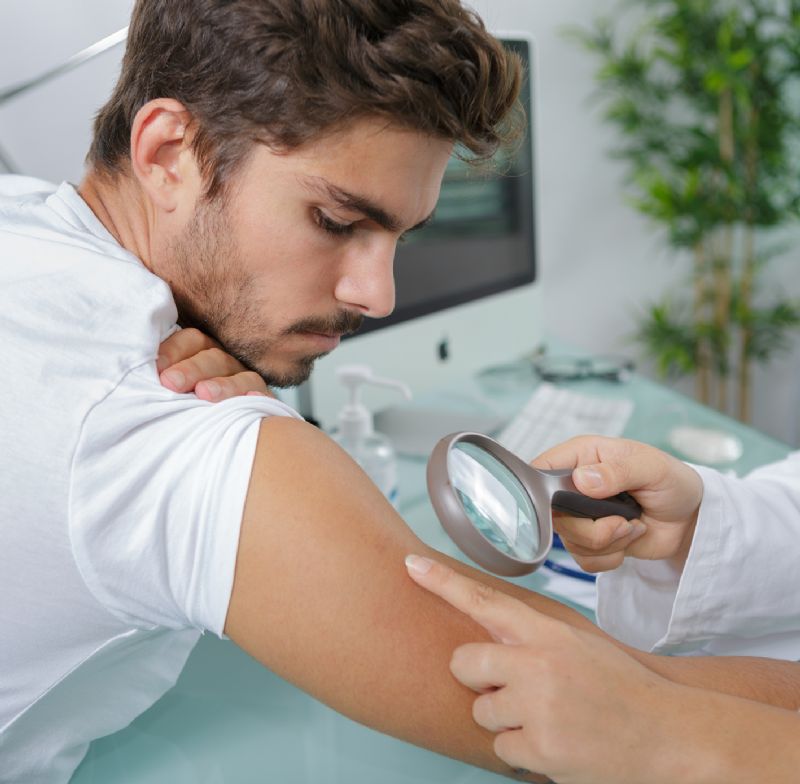- Home
- News, Articles & Reviews
- All Health & Beauty
- Looking Good, Feeling Great
- Medical Health
- Mirror Mirror on the Wall
- Style & Fashion
- General
- Vintage & Sustainable Fashion
We are hiring! Please click here to join our growing magazine delivery team in Gloucestershire!
Areas
Health & Beauty
Archive

Non-melanoma skin cancer
All Areas > Health & Beauty > Medical Health
Author: Kirsty Lilley, Posted: Friday, 26th April 2024, 09:00
Spring will soon give way to the longer days of summer, and many of us will be looking forward to being outdoors and the warmth of the sun.
Sunshine has many properties which are beneficial to our health and wellbeing, including its natural mood-boosting properties and the production of vitamin D. However, we must also remain aware that exposure to the sun brings potential risks to health if we don’t take reasonable steps to protect ourselves.
Basal cell carcinoma (BCC) is the most common form of skin cancer and is caused by sun damage and over-exposure to ultraviolet rays. It affects the basal cells of the skin’s top layer and causes small bumps and open sores on the skin. It often grows slowly and can go unnoticed.
It is also known as ‘rodent ulcer.’ Although classified as non-melanoma, which means it does not infiltrate to other cells of the body, it is important that it is treated to avoid disfigurement and causing harm to the surrounding skin tissue.
Who is most at risk?
People who are fair skinned and burn easily in the sun, those who have had a lot of sun exposure – perhaps through work or outdoor hobbies – and those who have previously had basal cell carcinoma are most at risk. Whilst it is not thought to be hereditary, the factors that increase risk, such as skin colour, skin that burns easily and freckling, can run in families.
What do they look like?
Whilst BCCs can vary in appearance, they are commonly seen as a scab that does not completely heal and has a propensity to bleed. They can also show up as a new red patch or pearly lump on the skin. Some are superficial flat patches of skin, while others can present as a lump with blood vessels on the surface.
They are usually painless, but they can be itchy and bleed if caught. They are very often easily treated, with early intervention the best option. If you are concerned about changes to your skin, visit your GP for further exploration.
How is it treated?
The most common form of treatment is surgery under local anaesthetic. This usually involves cutting away the BCC and some of the surrounding tissue. The skin can then be closed with stitches, although sometimes a skin graft will be needed.
How can you protect yourself?
Become familiar with your skin and check for any marks or scabs which are growing, bleeding and not healing. Visit your GP if you are concerned. Use a high protection sunscreen of at least 30 SPF, applying 15-30 minutes before sun exposure. Avoid going out in the sun, if possible, between midday and 3pm, and make use of shady areas. Ensure that you wear a hat that protects your face, neck and ears, and wear UV protective sunglasses.
For further information visit www.britishskinfoundation.orgCopyright © 2025 The Local Answer Limited.
Unauthorized use and/or duplication of this material without express and written permission from this site's author and/or owner is strictly prohibited. Excerpts and links may be used, provided that full and clear credit is given to The Local Answer Limited and thelocalanswer.co.uk with appropriate and specific direction to the original content.More articles you may be interested in...


© 2025 The Local Answer Limited - Registered in England and Wales - Company No. 06929408
Unit H, Churchill Industrial Estate, Churchill Road, Leckhampton, Cheltenham, GL53 7EG - VAT Registration No. 975613000You are leaving the TLA website...
You are now leaving the TLA website and are going to a website that is not operated by us. The Local Answer are not responsible for the content or availability of linked sites, and cannot accept liability if the linked site has been compromised and contains unsuitable images or other content. If you wish to proceed, please click the "Continue" button below:




